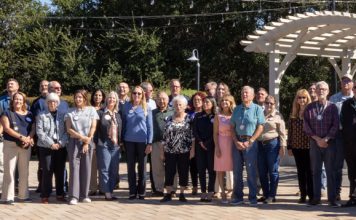Picture this dream horror scene at a Gilroy public pay phone as
a caller dials the 9-1-1 emergency number to report a man hit by a
car:
”
9-1-1 emergency. Please deposit three dollars in change into the
coin slot before we can help you.
”
Picture this dream horror scene at a Gilroy public pay phone as a caller dials the 9-1-1 emergency number to report a man hit by a car: “9-1-1 emergency. Please deposit three dollars in change into the coin slot before we can help you.”
Crazy? Yes. Impossible? Sure. So here’s a more plausible situation. When reviewing your monthly phone bill, you’re surprised to find that the 9-1-1 call you placed to report your neighbor’s house fire is costing you $3 for the call. That will really motivate you to consider being a Good Samaritan again.
Welcome to the brave new world of the fiscal twilight zone. As ridiculous as this 9-1-1 dialing for dollars sounds, it just might be an accurate picture of what will happen in Gilroy in a number of years, if, according to a Dispatch article dated May 14, the state’s budget crisis doesn’t end soon. The article continues to say that charging fees for 9-1-1 calls is one of a number of “outside the box” solutions city leaders are toying with to stave off financial ruin.
Now thinking “outside the box” is one thing, but ideas like this appear to me that somebody in local government has been in the cubicle way too long, and is living in Dilbert-land. The same article says “city manager Jay Baksa called his estimates ‘very rough,’ but told Council the city could take in somewhere between $600,000 and $800,000 in revenue if it charges a nominal fee for 9-1-1 calls.” Now to me that means a cost per call.
But a nominal fee? To begin with, let’s assume that the Gilroy PD call center receives an average of 100 emergency calls over a 24-hour period. This includes calls for police and fire department emergency services, valid or not.
So over a one-year period of 365 days, there would be a total of 36,500 emergency calls received. Dividing the projected high-end revenue of $800,000 from fees received by 36,500 emergency calls yields $21.92 per call.
Even with inflation over the next few years, that’s hardly a “nominal fee.” And if we reverse the process and use the $800,000 high-end revenue projection with a genuine nominal fee of say $3 per call, then there would need to be a total of 266,667 emergency calls placed to GPDHQ over a year. That would average 731 calls per 24-hour period, or 30 calls per hour.
Now I’m probably wrong with my assumptions, and maybe it’s a flat fee on each telephone in Gilroy, but it still appears that Mr. Baksa’s 9-1-1 revenue projections need some further explaining.
But just for fun, let’s continue to think “out of the box” and help the City Council come up with ways to make-up for lost city revenue if the budget situation does not get better. So consider these ideas for adding revenue:
• Want to attend a City Council meeting? It’ll cost you $10 to get in. Want to speak to the council on an issue? OK, $5 per minute, payable in advance.
• Have a city councilman speak at your next club meeting. Only $500 for 30 minutes, and the money goes to the city, not to the councilman. The mayor costs $750 per 30 minutes because he’s got more status.
• Want a Gilroy street named after you? OK, $30,000 per tenth of a mile (or less) per street. Signs are extra, and fee must be renewed every 5 years. No mixed names per street, and no names duplicated.
• Ride along with the Gilroy PD, only $25 per hour, with a two-hour minimum. Rates higher on Friday and Saturday nights.
• Sad because you never became a firefighter? Ride along on a GFD engine, only $50 per hour, including waiting time at the station. However, no callout action is guaranteed, and bring your own snacks. Turnout gear not included.
• Or how about your name on the front of city hall or the library? Starting bids at $100,000. Just think of the prestige you’ll receive from your friends.
• Not getting enough advertising exposure for your business? Get your ad placed on a GPD vehicle or GFD engine. Heck, taxis do it. Only $1,000 per ad per vehicle per month.
While these suggestions are silly, you’ll have to admit they’re outside the box. Still, Gilroy could become a trendsetter for cities all across America for raising revenue. Opportunity is knocking citizens of Gilroy, so go for it! And if you’ve got any lawful ideas to get extra revenue for Gilroy City Hall, please email me with them. It should make a fun future column.













